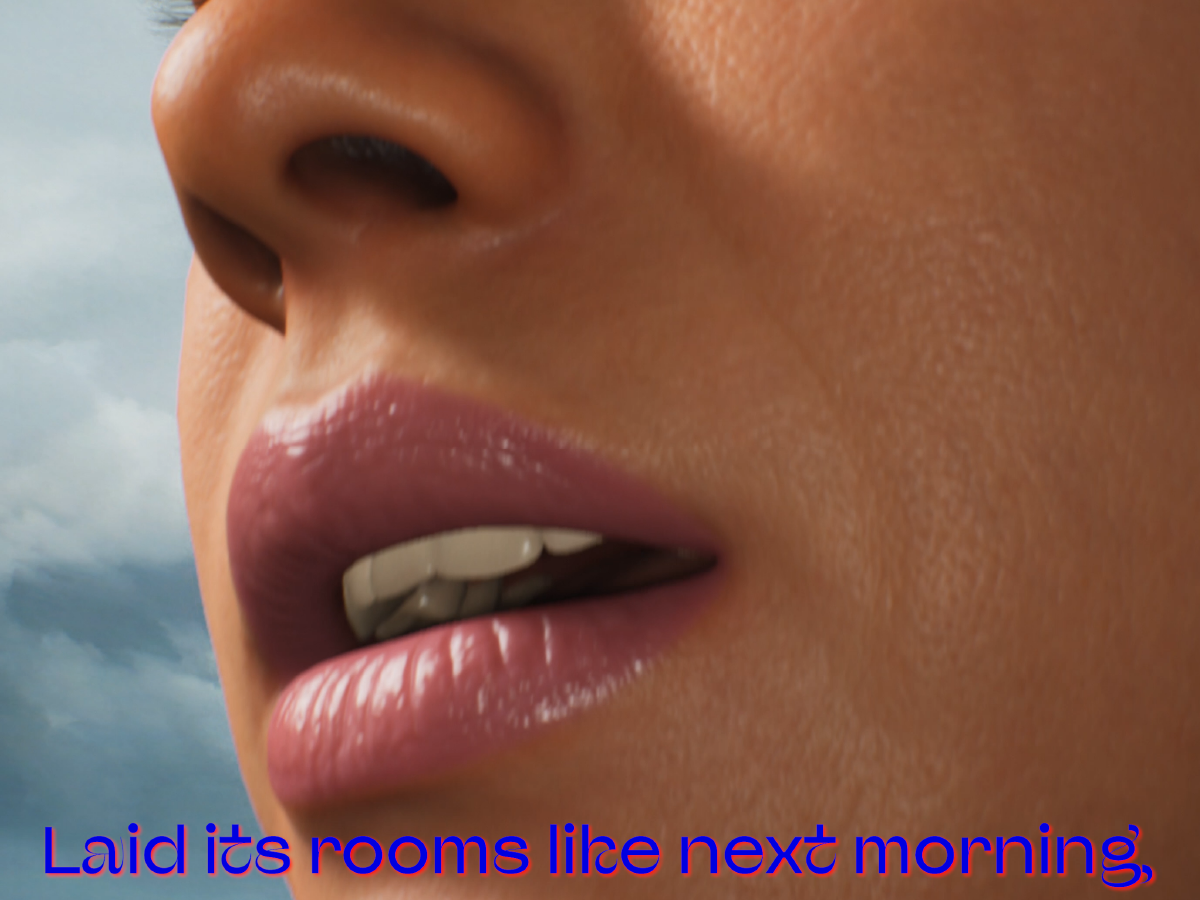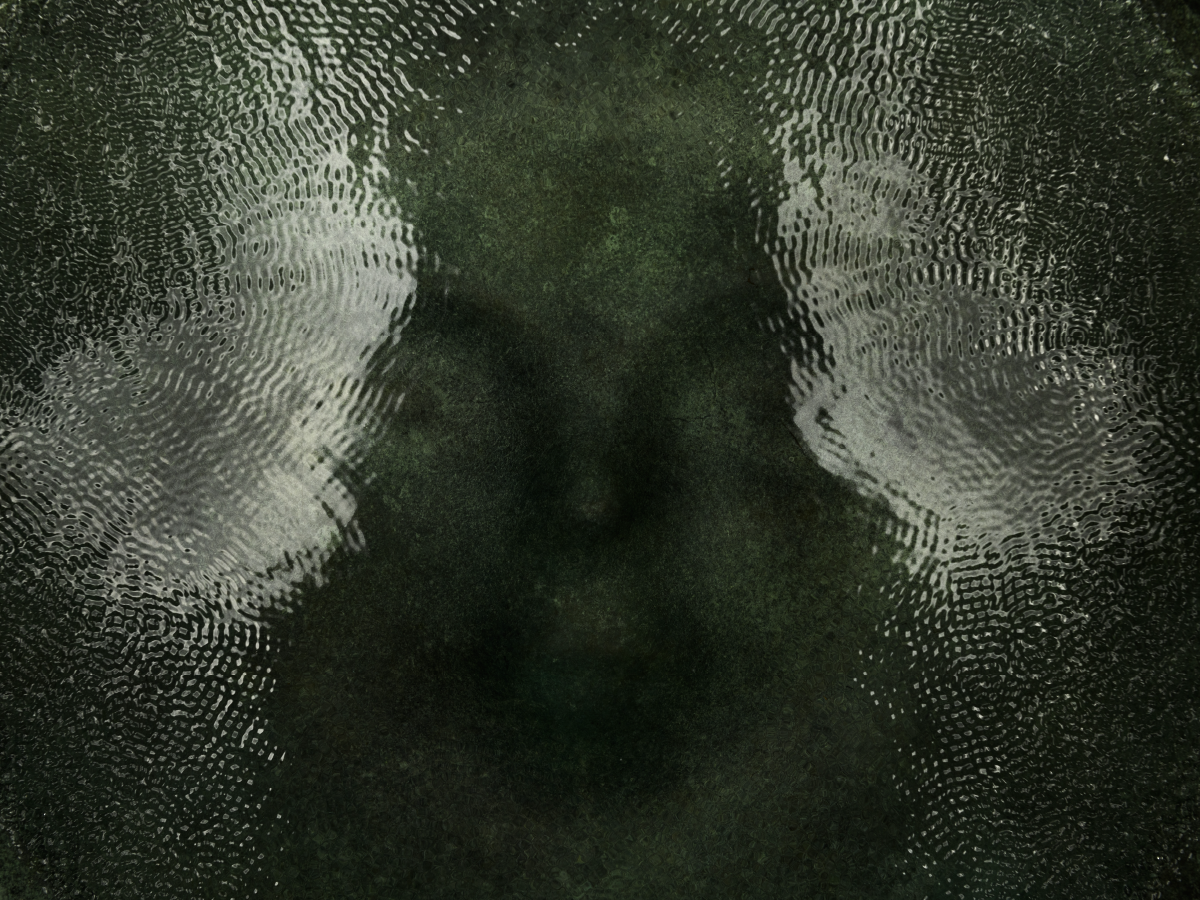NORA AL-BADRI, JENNA SUTELA, DAMIEN ROACH
Published
Opening of the installations:
16 Nov 18:00-21:00
Opening hours:
17 Nov 16:00–22:00
18 Nov 12:00–22:00
19 Nov 12:00–16:00
Venue: Østre, Østre Skostredet 3
NORA AL-BADRI: BABYLONIAN VISION
With Babylonian Vision Nora Al-Badri expands on speculative archeology, as well as decolonial and machine learning museum practices by generating emancipatory technoheritage. A pre-trained neural network based on a GAN model (General Adversarial Network), technoheritage was trained with 10.000k images from five different museums containing the largest collections of Mesopotamian, Neo-Sumerian and Assyrian artefacts. Even though each museum was asked beforehand, images were in the majority collected through web crawling and scraping, without the institution’s approval, and just two through their open API (digital access).
The input images from these databases carry marks of time and memory – patina, broken pieces, most of them in a mid to low resolution format. Subsequently, new synthetic images evolve as a living memory made up of the collected images. The generated image is at the same time the artefact itself. Yet, materiality is very important, since the input images are images of material objects from our past. If machine learning is seen as a technology performing and processing our collective memory, it makes sense to apply it to our big cultural data of the past and to generate new images as traces and circulating image worlds. Applying ML to cultural big data, supplies other, more speculative and abstract insights in the search for a visual language, form and patterns within a specific spatial context: the Babylonian era.
The series consists of over 150 GAN videos and over 200 images.
With texts written by: Prof. Wendy M. K. Shaw, Dr. Fazil Moradi, Dr. Saud Al-Zaid, Daphne Dragona, Dr. Anita Hosseini
JENNA SUTELA: POND-DIAL
The installation Pond-Dial is a wormhole between Sutela’s installation Pond Brain, currently on display in Copenhagen, and Østre in Bergen. It presents a live stream of sounds from a head shaped instrument-cum-fountain, a bowl of water made out of bronze that can be played, or activated by touch, as well as an artificial neural network trained on underwater and interplanetary sounds. The network tunes into sonic frequencies from the bowl and plays back an array of otherworldly resonances. Pond-Dial invites you to listen in on the constantly transforming soundscape of the pond.
DAMIEN ROACH: POEM 2
“Poem 2” is a newly commissioned installation by Damien Roach centred around a 100 line poem written by the artist in 2021 in collaboration with an AI trained on the work of Emily Dickinson. The poem has been brought to life through a computer animated recital performed by a custom-modelled androgynous CGI character, situated in an unlocatable place, with only the sky in view. A camera slowly pans around the scene, resting for short moments before continuing its almost forensic analysis of the figure, resisting the security of a fixed and static viewpoint. The CGI figure’s voice is that of the artist’s own, digitally processed to ambiguate their perceived gender. Similarly, its facial movements have been mapped on Roach’s, transferred to the animation utilising motion capture technology. The atmospheric ambient soundtrack has been produced using text-to-audio AI systems with further editing, DSP, and post production completed in modern DAW software.
About the artists
NORA AL-BADRI
Nora Al-Badri is a multi-disciplinary and conceptual media artist with a German-Iraqi background. Her works are research-based as well as paradisciplinary and as much post-colonial as post-digital. Al-Badri lives and works in Berlin, and graduated in political sciences at Johann Wolfgang Goethe University in Frankfurt/Main. She is now the director for AI+Art at the ETH AI Center in Zurich. Her practice focuses on the politics and the emancipatory potential of new technologies such as machine intelligence or data sculpting, non-human agency and transcendence. Al-Badri’s artistic material is a speculative archaeology – from fossils to artefacts or performative interventions in museums and other public spaces – to respond to the inherent power structures.
Her work was featured at The New York Times, BBC, The Times, Artnet, Wired, Le Monde Afrique, Financial Times, Arte TV, The Independent, New Statesmen, Hyperallergic, Smithsonian, Al Ahram, Egypt Today, Vice, Hürriyet, Dezeen, Frankfurter Allgemeine Sonntagszeitung, Spiegel Online, Heise, The Boston Globe, Dezeen, Archdaily, Polska, La informacion, De Volkskrant, Gizmodo, New Scientist, Popular Science and The Verge amongst others.
JENNA SUTELA
Jenna Sutela is a Finnish artist based in Berlin. She works with biological and computational systems, including the human microbiome and artificial neural networks to create sculptures, images and music. Sutela’s work has been presented at museums and art contexts internationally, including Swiss Institute, New York (2023); Helsinki Biennial (2023); Haus der Kunst, Munich (2022); Castello di Rivoli Museo d’Arte Contemporanea, Rivoli-Turin (2022); Kiasma Museum of Contemporary Art, Helsinki (2022); Shanghai Biennale (2021); Liverpool Biennial (2021); Kunsthall Trondheim (2020); Serpentine Galleries, London (2019); and Moderna Museet, Stockholm (2019). She was a Visiting Artist at the MIT Center for Art, Science & Technology (CAST) in 2019-21.
DAMIEN ROACH
Damien Roach is a London-based artist, designer, researcher and lecturer. His projects span art, design & creative direction, publishing, sound/music and audio-visual media. He is currently undertaking a PhD at the Royal College of Art in AI imaging, perception, and creativity. Recent projects include immersive AV performances at London’s ICA and Tate Modern, design for clients ranging from Caribou to Disney and a journal exploring non-dystopic future visions with a host of contributors including Susan Hiller, Isabella Maidment, Hans Ulrich Obrist, and Liam Gillick. He has exhibited internationally, including at the 51st Venice Biennale, “Learn to Read” at Tate Modern, “Housewarming” at Swiss Institute, New York, and solo presentations at institutions including DRAF, London, Kunst Halle Sankt Gallen, Switzerland, Arnolfini, Bristol, and Neuer Aachener Kunstverein, Germany. In April, as patten, he released “Mirage FM”, the first album made entirely from text-to-audio AI sound sources.
Return to the full symposium programme.
Images: 1 & 3) Jenna Sutela, Pond Brain (2023) Installation view Yet, It Moves!, Copenhagen Contemporary (2023) 1) Photo: David Stjernholm, 3) Photo: Julian Blum 2 & 4) Stills from Poem 2 (2023) by Damien Roach.



